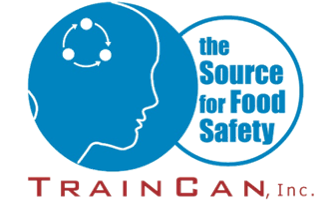How does E. coli get into food?
Article By Marilyn Perkins Published December 23, 2024
Article Source: How does E. coli get into food? | Live Science
Dangerous strains of E. coli bacteria can infiltrate the food supply through many different routes, experts explain.
Each year, Escherichia coli, or E. coli, causes about 265,000 infections and 100 deaths in the United States. Many of those infections result in foodborne illness. Notably, E. coli contamination has historically caused large and notable food recalls. In 2023 alone, the U.S. Food and Drug Administration (FDA) recalled 72,858 pounds (33,048 kilograms) of E. coli-contaminated food.
But how does E. coli get into food in the first place?
First off, it's important to understand that not all strains of E. coli are the same.
"E. coli are a group of common bacteria that are found naturally in many places including the environment, food, water and in the intestines of people and certain animals," Janell Goodwin, a spokesperson for the FDA, told Live Science in an email. "Most E. coli are harmless and contribute to intestinal health."
However, certain E. coli strains are dangerous because they produce Shiga toxins, harmful substances that can damage the digestive tract. These strains are called Shiga-toxin-producing E. coli (STEC). People can become sick if they eat or drink food or water contaminated by STEC, and children under 5 and adults over 65 typically face the greatest risk of severe infections.
How dangerous bacteria contaminate food
There are a number of ways STEC can end up in food. "Food goes through several steps from where it is grown or made to the dining table," a spokesperson for the U.S. Centers for Disease Control and Prevention (CDC) told Live Science in an email. "Contamination can occur at any point along the chain — during production, processing, distribution or preparation."
Goodwin noted that one major route of infection occurs through animals, including both livestock and wildlife. Animals may carry STEC in their intestines and then shed it through their feces. Even a tiny amount of feces present on a livestock carcass can lead to E. coli contamination in the resulting products made from that flesh. Ground beef is at particularly high risk of contamination, for instance, because cattle are the main carrier of E. coli O157, an especially dangerous strain of STEC. The bacteria can spread around when the meat is ground, and this has resulted in major recalls.
Bacteria from livestock or wildlife feces can also contaminate produce. For example, runoff from livestock farms can shepherd E. coli into water used to irrigate crops. Improperly treated manure used as fertilizer can also carry the harmful bacteria.
In addition, farmworkers who come into contact with livestock or produce may unknowingly transfer E. coli during planting, harvesting or processing if they don't carefully follow safety protocols aimed at preventing the transfer of bacteria from fecal contamination.
Harmful E. coli strains can also taint food on the other end of the food processing chain, such as at a restaurant. "Carriers [who shed the bacteria in their feces] can spread infections when food handlers do not use proper hand washing hygiene after using the restroom," Goodwin said.
Stopping the spread
The FDA recommends that people wash their hands with warm water and soap for at least 20 seconds before and after handling any raw food. The agency also emphasizes the importance of handwashing before, during and after changing a baby's diaper, and when making contact with livestock.
Countertops and cutting boards can be another source of contamination, so the FDA advises washing those carefully as well.
Certain foods are more likely to be contaminated with harmful E. coli than others. A 2021 report from the CDC found that beef — particularly raw or undercooked ground beef — and vegetable row crops, such as leafy greens, were the source of 80% of O157 infections in the U.S. from 1998 to 2021. Raw and undercooked poultry; raw sprouts such as alfalfa; and products made with unpasteurized, or raw, milk are also common culprits, Goodwin added.
Researchers are still working to gain a better understanding of the factors that contribute to E. coli contamination in the food supply. One recent study found that seasonal changes in temperature may influence the likelihood of E. coli outbreaks tied to lettuce grown in California, while another study from Arizona found that STEC can spread through the air, traveling from large livestock facilities to nearby produce farms.
Goodwin also noted that, while it can be alarming to see more regular E. coli recalls and advisories in the news, it doesn't necessarily mean that the food safety system is failing.
"The occurrence of recalls and advisories means that manufacturers, importers, and distributors are monitoring for issues and taking action when they detect a problem," she said. "Consumers should know that recalls and outbreak advisories indicate that the problem has been identified and is being addressed. "
